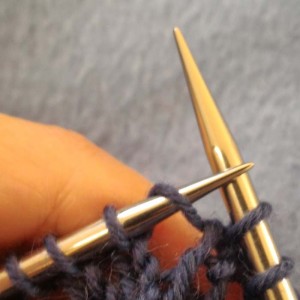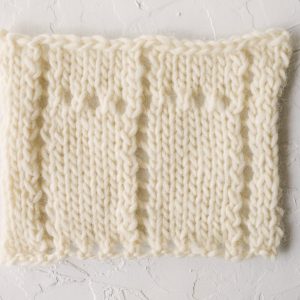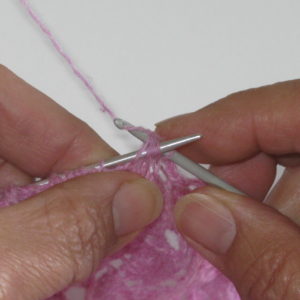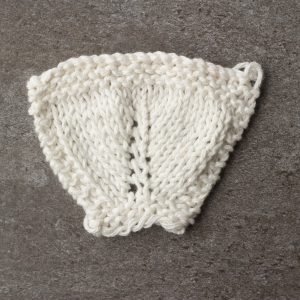
Learn how to knit the bobble stitch with this photo tutorial!
View ProjectFrom the Knit Your Best Year Ever: 19 Knit Stitches, Tips, Tricks and More issue

Learn how to knit the bobble stitch with this photo tutorial!
View ProjectFrom the Knit Your Best Year Ever: 19 Knit Stitches, Tips, Tricks and More issue
This is a method for joining a knitted hem that results in a completely invisible finish. The process is very similar to Kitchener stitch, but not identical since you have only one row of live stitches to join to a row of purl bumps inside the knitted fabric.
View ProjectBy Heidi Gustad
From the Knit Your Best Year Ever: 19 Knit Stitches, Tips, Tricks and More issue

Cast on.
First row: K3, yo.
First row continued: K2tog.
Continue working (yo, k2tog) until 5 sts remain. Finish row one with a final yo, k2tog. Then k3.
The right side of your first row will look like this. The bottom of the swatch above features the right side of the first row as
View ProjectBy Nazanin Fard
From the Knit Your Best Year Ever: 19 Knit Stitches, Tips, Tricks and More issue

When knitting motifs/doilies most of the time you do not bind them off as you normally do. As regular bind off does not produce a beautiful finished edge. Most instructions call for finishing the item with a crochet hook. For knitters who know how to crochet that is not a problem. However, if you do not know how to crochet, the question remains, now what?
In this article I will show you how to bind off with crochet hook and join the motifs as you go, so there is no sewing involved. In addition, I will show you how to work the same process without using a crochet hook and use your knitting needles to get the same effect.
View ProjectFrom the Knit Your Best Year Ever: 19 Knit Stitches, Tips, Tricks and More issue

If you’ve been knitting for more than a few days, you’ve probably seen the abbreviations “M1L” and “M1R” pop up in the patterns you’ve been perusing. As you may know already, these techniques are two of countless types of increases you can use in your knitting. For each instance, you create a new stitch in your work that leans either left or right. Yes, just as the name states—you make one. Knitting these increases is simple enough for even beginners to master easily.
View ProjectFrom the August 2019 issue

If you’ve been knitting for more than a few days, you’ve probably seen the abbreviations “M1L” and “M1R” pop up in the patterns you’ve been perusing. As you may know already, these techniques are two of countless types of increases you can use in your knitting. For each instance, you create a new stitch in
View ProjectFrom the February 2019 issue
I-cords, also known as Idiot Cords, are useful for different purposes, including finishing knitted items. I-cords are sturdy and, when you look closely, look as though they are knitted in round. Different types of machines exist to create I-cords, like I-cord Knitting Machines and spool knitters, but you can achieve the same effect with double pointed
View ProjectFrom the October 2018 issue

If you’ve been knitting for more than a few days, you’ve probably seen the abbreviations “M1L” and “M1R” pop up in the patterns you’ve been perusing. As you may know already, these techniques are two of countless types of increases you can use in your knitting. For each instance, you create a new stitch in
View ProjectBy Nazanin Fard
From the June 2018 issue

When knitting motifs/doilies most of the time you do not bind them off as you normally do. As regular bind off does not produce a beautiful finished edge. Most instructions call for finishing the item with a crochet hook. For knitters who know how to crochet that is not a problem. However, if you do
View ProjectFrom the December 2017 issue
This is a method for joining a knitted hem that resuslts in a completely invisible finish. The process is very similar to Kitchener stitch, but not identical since you have only one row of live stitches to join to a row of purl bumps inside the knitted fabric.
Pass tapestry needle through the first stitch of
View Project